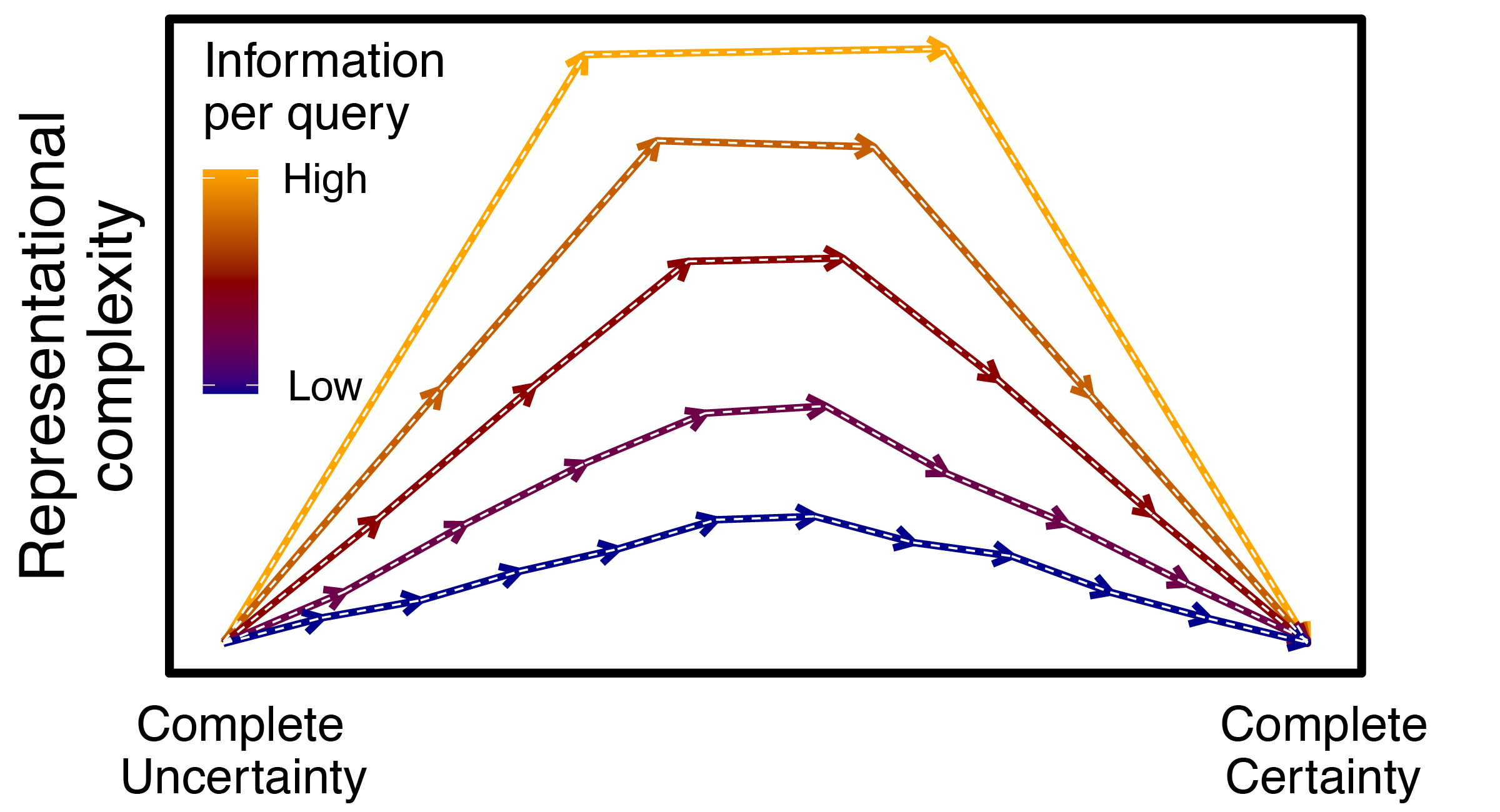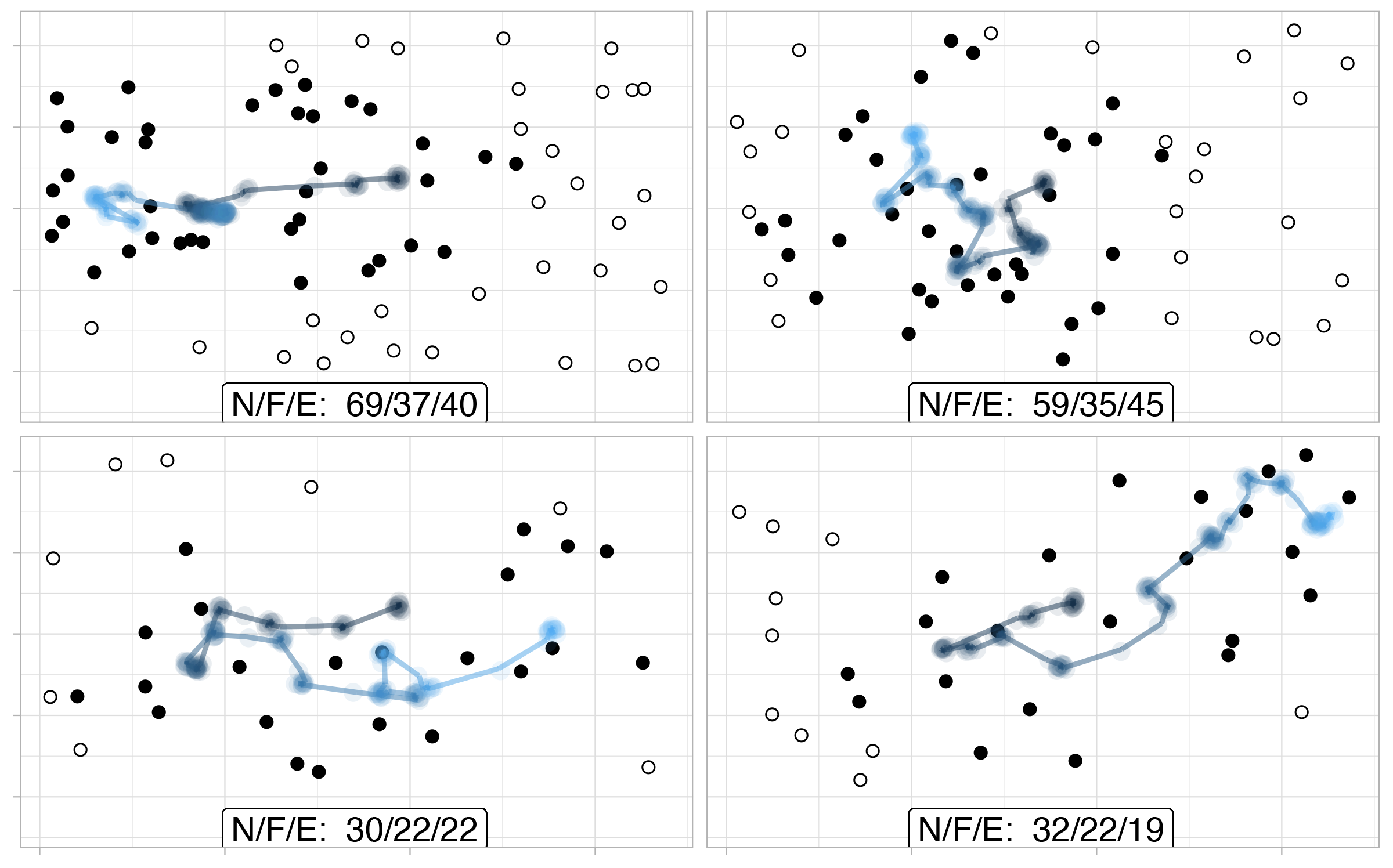About Me
I am a researcher at MIT (CoCoSci) studying how people perceive, learn, and reason effectively given limited cognitive resources. I did my graduate work with Steve Piantadosi at UC Berkeley. My thesis work was aimed at understanding the mechanisms underlying visual numerosity perception. I've used behavioral experiments and computational models to link the visual information people gather from a scene to their ultimate perceptions of quantities. In one project, I showed that the psychophysics of number, including "subitizing" small quantities and Weber's law for larger quantities, reflects optimal inference under a limited informational capacity. See an explainer here. You can read a précis of my thesis here.
My recent projects explore how people learn geometric patterns, reason about physical systems, and actively seek information in ways that respect their cognitive limitations. One direction I am particularly excited about is modeling and experimentally testing how people reason in complex settings without holding many pieces of information in memory simultaneously.
Interests
- Bayesian & information-theoretic modeling
- Visual perception
- Numerical cognition
- Active information-seeking
- Concept learning
Education
- Postdoctoral Researcher, 2022-PresentMIT, Computational Cognitive Science Lab
- PhD in Psychology, 2016-2022UC Berkeley, Computation and Language Lab
- BS in Cognitive Science, 2012-2016Carnegie Mellon University
Project Highlights




Selected Publications
Spatiotemporal program learning in human adults, children, and monkeys
Mills, T., Coates, N., Silva, A.A., Ji, K., Ferrigno, S., Schulz, L.E., Tenenbaum, J.B., Cheyette, S.J.
(Under Review)
Human active learning trades off informativity and interpretability
Cheyette, S.J., Callaway F.L., Bramley N., Nelson, J., Tenenbaum J.B.
(Under Review)
Limited information-processing capacity in vision explains number psychophysics
Cheyette, S. J., Wu, S., & Piantadosi, S. T.
Psychological Review (2024)
Response to difficulty drives variation in IQ test performance
Cheyette, S. J., Wu, S., & Piantadosi, S. T.
Open Mind (2024)
Spatiotemporal pattern learning as probabilistic program synthesis
Mills, T., Tenenbaum, J. B., & Cheyette, S. J.
Neural Information Processing Systems (2024)
A unified account of numerosity perception
Cheyette, S. J. & Piantadosi, S. T.
Nature Human Behaviour (2020)
Recursive sequence generation in monkeys, children, and native Amizonians
Ferrigno, S., Cheyette, S. J., Piantadosi, S. T., & Cantlon, J.
Science Advances (2020)
A primarily serial, foveal accumulator underlies approximate numerical estimation
Cheyette, S. J. & Piantadosi, S. T.
Proceedings of the National Academy of Sciences (2019)
Modeling the N400 ERP component as transient semantic over-activation within a neural network model of word comprehension
Cheyette, S. J., Plaut, D. C.
Cognition (2017)